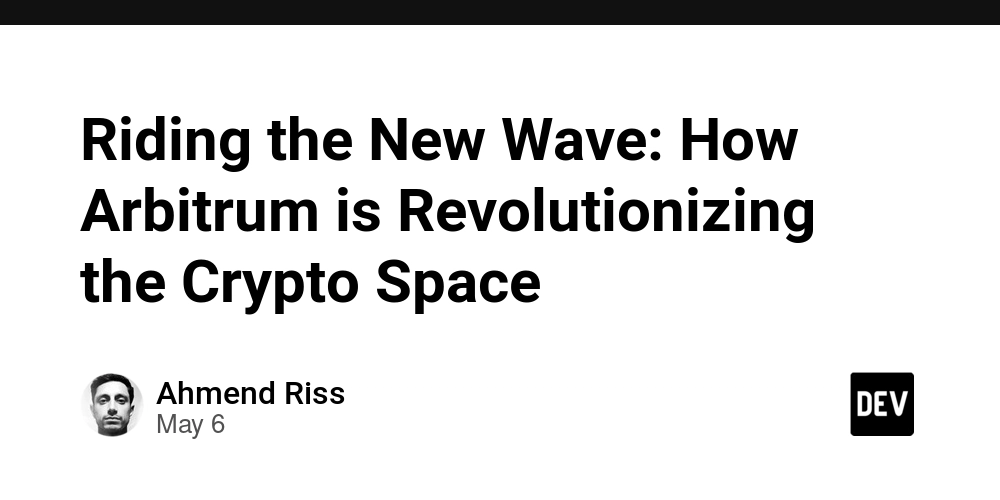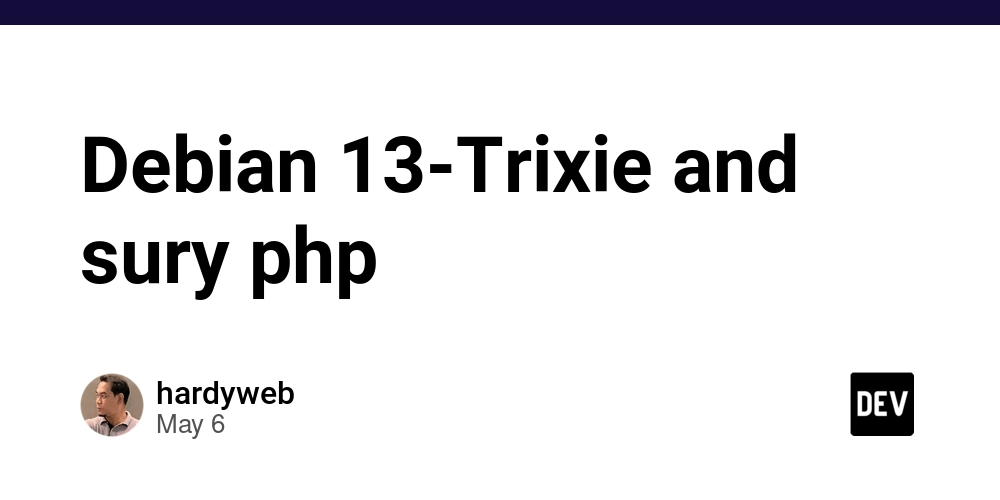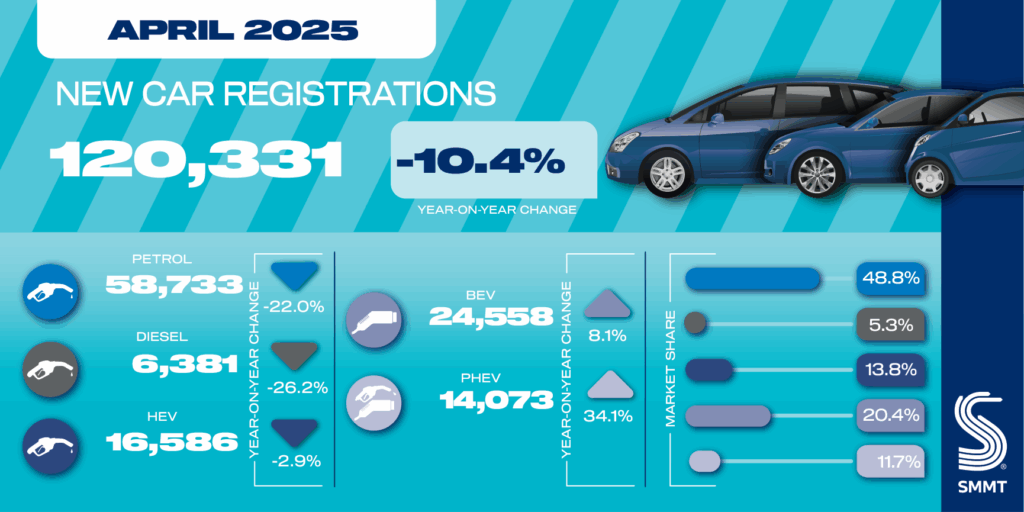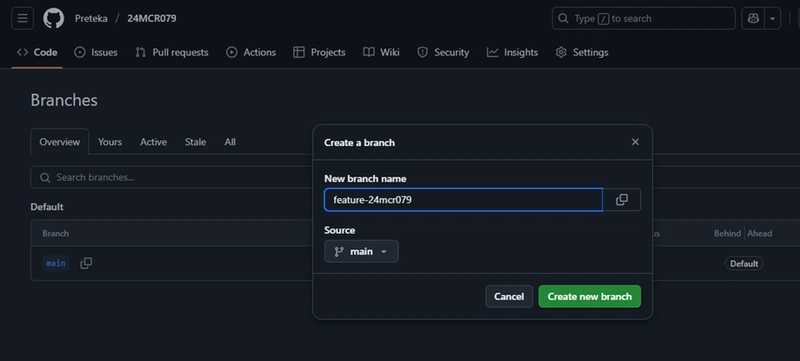Riding the New Wave: How Arbitrum is Revolutionizing the Crypto Space
Abstract In this post, we dive deep into the technological innovations of Arbitrum—a Layer 2 Ethereum scaling solution that is revolutionizing the blockchain space. We explore its background, core features, applications in areas such as NFT marketplaces and DeFi, challenges it faces, and what the future may hold. By examining technical details, interoperable benefits, and current debates around security and scalability, readers will acquire a well-rounded understanding of Arbitrum’s role in the crypto ecosystem. For more information, refer to the original article Riding the New Wave: How Arbitrum is Revolutionizing the Crypto Space. Introduction The blockchain landscape is continuously evolving, and solutions that address scalability have become crucial for sustainable growth. Arbitrum is one such innovation, emerging as a prominent Layer 2 scaling solution on Ethereum. This breakthrough technology optimizes transaction speed and cost efficiency without sacrificing security—a dual achievement that has captured the attention of developers, NFT enthusiasts, and DeFi advocates alike. In this post, we explore the relevance of Arbitrum within the modern crypto space using a technical yet accessible approach. By presenting an in-depth analysis, we will highlight its significance while also discussing challenges and future trends. Whether you are a tech professional, an investor, or a blockchain novice, this guide will help you understand why Arbitrum is riding the new wave of crypto innovations. Background and Context Before dissecting Arbitrum’s core concepts, it is essential to understand blockchain fundamentals. Blockchain is a distributed ledger technology that ensures data integrity and immutability through consensus mechanisms. Ethereum, in particular, has been the home ground for a myriad of decentralized applications (dApps), yet it is burdened by high transaction fees and network congestion. Layer 2 solutions are designed to alleviate these constraints by processing transactions off the main chain. Arbitrum, developed by Offchain Labs, is built upon this philosophy. Using a mechanism known as Optimistic Rollups, Arbitrum bundles numerous transactions off-chain, ultimately settling them on Ethereum’s main chain. This smart solution dramatically reduces the computational burden on Layer 1, lowers gas costs, and accelerates transaction throughput. Additional context is provided by established resources such as What is Blockchain? and Offchain Labs’ Medium page, which offer detailed insights into these technologies. Core Concepts and Features Arbitrum offers a host of features that contribute significantly to its adoption and effectiveness. Here, we break down its core components: 1. Optimistic Rollups Arbitrum harnesses Optimistic Rollups to execute transactions off-chain, thereby: Reducing fees: Transactions are bundled, cutting costs dramatically. Increasing throughput: More transactions per second can be processed, lowering network congestion. Ensuring security: A fraud-proof mechanism allows disputes to be resolved by reverting to the Ethereum mainnet if necessary. 2. Seamless Interoperability Unlike some competing solutions that require major changes in smart contract code, Arbitrum is designed for EVM (Ethereum Virtual Machine) compatibility. This means: Developers can deploy existing Ethereum smart contracts on Arbitrum with minimal adjustments. User experience is improved because the transition is frictionless, maintaining continuity across various dApps and NFT marketplaces. 3. Enhanced User Experience and Efficiency Arbitrum’s design elements ensure that: Transaction speed is significantly increased. Lower gas fees are achieved, benefiting both creators and consumers in the ecosystem. Applications built on Arbitrum, including NFT platforms and DeFi projects, offer a more reliable and cost-effective user experience. 4. Robust Security Measures The network incorporates a fraud-proof mechanism—a safeguard that provides additional validation checks. This strong security architecture reassures users worried about potential vulnerabilities, thereby supporting the idea that scalability does not compromise safety. These core features are summarized in the table below: Feature Description Benefits Optimistic Rollups Aggregates transactions off-chain before settlement on Layer 1 Lower fees and faster throughput EVM Compatibility Allows deployment of existing Ethereum smart contracts Seamless developer experience Fraud-Proof Security Reverts to Ethereum mainnet for dispute resolution Enhanced network security Reduced Network Congestion Offloads transactions from the main chain Improved performance and reliability Applications and Use Cases Arbitrum’s innovations create opportunities across various sectors of crypto, particularly: A. NFT Marketpl

Abstract
In this post, we dive deep into the technological innovations of Arbitrum—a Layer 2 Ethereum scaling solution that is revolutionizing the blockchain space. We explore its background, core features, applications in areas such as NFT marketplaces and DeFi, challenges it faces, and what the future may hold. By examining technical details, interoperable benefits, and current debates around security and scalability, readers will acquire a well-rounded understanding of Arbitrum’s role in the crypto ecosystem. For more information, refer to the original article Riding the New Wave: How Arbitrum is Revolutionizing the Crypto Space.
Introduction
The blockchain landscape is continuously evolving, and solutions that address scalability have become crucial for sustainable growth. Arbitrum is one such innovation, emerging as a prominent Layer 2 scaling solution on Ethereum. This breakthrough technology optimizes transaction speed and cost efficiency without sacrificing security—a dual achievement that has captured the attention of developers, NFT enthusiasts, and DeFi advocates alike.
In this post, we explore the relevance of Arbitrum within the modern crypto space using a technical yet accessible approach. By presenting an in-depth analysis, we will highlight its significance while also discussing challenges and future trends. Whether you are a tech professional, an investor, or a blockchain novice, this guide will help you understand why Arbitrum is riding the new wave of crypto innovations.
Background and Context
Before dissecting Arbitrum’s core concepts, it is essential to understand blockchain fundamentals. Blockchain is a distributed ledger technology that ensures data integrity and immutability through consensus mechanisms. Ethereum, in particular, has been the home ground for a myriad of decentralized applications (dApps), yet it is burdened by high transaction fees and network congestion.
Layer 2 solutions are designed to alleviate these constraints by processing transactions off the main chain. Arbitrum, developed by Offchain Labs, is built upon this philosophy. Using a mechanism known as Optimistic Rollups, Arbitrum bundles numerous transactions off-chain, ultimately settling them on Ethereum’s main chain. This smart solution dramatically reduces the computational burden on Layer 1, lowers gas costs, and accelerates transaction throughput.
Additional context is provided by established resources such as What is Blockchain? and Offchain Labs’ Medium page, which offer detailed insights into these technologies.
Core Concepts and Features
Arbitrum offers a host of features that contribute significantly to its adoption and effectiveness. Here, we break down its core components:
1. Optimistic Rollups
Arbitrum harnesses Optimistic Rollups to execute transactions off-chain, thereby:
- Reducing fees: Transactions are bundled, cutting costs dramatically.
- Increasing throughput: More transactions per second can be processed, lowering network congestion.
- Ensuring security: A fraud-proof mechanism allows disputes to be resolved by reverting to the Ethereum mainnet if necessary.
2. Seamless Interoperability
Unlike some competing solutions that require major changes in smart contract code, Arbitrum is designed for EVM (Ethereum Virtual Machine) compatibility. This means:
- Developers can deploy existing Ethereum smart contracts on Arbitrum with minimal adjustments.
- User experience is improved because the transition is frictionless, maintaining continuity across various dApps and NFT marketplaces.
3. Enhanced User Experience and Efficiency
Arbitrum’s design elements ensure that:
- Transaction speed is significantly increased.
- Lower gas fees are achieved, benefiting both creators and consumers in the ecosystem.
- Applications built on Arbitrum, including NFT platforms and DeFi projects, offer a more reliable and cost-effective user experience.
4. Robust Security Measures
The network incorporates a fraud-proof mechanism—a safeguard that provides additional validation checks. This strong security architecture reassures users worried about potential vulnerabilities, thereby supporting the idea that scalability does not compromise safety.
These core features are summarized in the table below:
| Feature | Description | Benefits |
|---|---|---|
| Optimistic Rollups | Aggregates transactions off-chain before settlement on Layer 1 | Lower fees and faster throughput |
| EVM Compatibility | Allows deployment of existing Ethereum smart contracts | Seamless developer experience |
| Fraud-Proof Security | Reverts to Ethereum mainnet for dispute resolution | Enhanced network security |
| Reduced Network Congestion | Offloads transactions from the main chain | Improved performance and reliability |
Applications and Use Cases
Arbitrum’s innovations create opportunities across various sectors of crypto, particularly:
A. NFT Marketplaces
The rapid growth of NFTs (Non-Fungible Tokens) has stressed Ethereum’s network due to high gas fees and slow confirmation times. By implementing Arbitrum’s Layer 2 scaling, NFT marketplaces:
- Lower transaction costs: Artists and collectors can engage in buying and selling without incurring excessive fees.
- Streamline minting processes: Faster transaction times translate to more efficient NFT creation and trading.
For example, platforms integrating Arbitrum can offer a superior user interface—similar to centralized platforms—while still maintaining a decentralized governance model. More on NFTs can be found in resources like What are NFTs?.
B. Decentralized Finance (DeFi)
The challenges of high transaction fees and slow processing are not exclusive to NFTs. DeFi platforms that support lending, borrowing, and instantaneous trades have much to gain:
- Efficient trading: Lower latency and nearly instantaneous transaction finality mean trades can occur almost in real-time.
- Cost savings: Reduced gas fees allow smaller-value transactions to be economically viable.
- Enhanced liquidity: As more traders join, the overall ecosystem becomes more interconnected, further reducing friction.
For further reading on decentralized finance, check out Decentralized Finance (DeFi) and NFTs.
C. Cross-Chain Interoperability
Beyond just NFTs and DeFi, Arbitrum’s technology paves the way for cross-chain interactions. This means various blockchain ecosystems can be bridged, offering:
- Interoperable solutions: Different blockchains can work together, providing users with a truly multi-chain experience.
- Scalability across projects: Projects do not remain isolated to one chain but benefit from shared infrastructure.
This interoperability opens up possibilities for innovative projects that can interact seamlessly with networks such as Polygon and Optimism.
Challenges and Limitations
While Arbitrum is a critical step forward, it faces several obstacles that need addressing:
Technical Challenges
- Complex Upgrades: As with any emerging technology, continuous upgrades and integrations can sometimes introduce new bugs or unforeseen vulnerabilities.
- Competition: Other Layer 2 and Layer 3 solutions—such as Optimism and Polygon—also vie for market share. Balancing innovation with stability remains an ongoing challenge.
- Interoperability Complexities: Even though Arbitrum is EVM-compatible, bridging between chains can require extensive technical oversight and careful management.
Adoption and Regulatory Hurdles
- Wider Community Adoption: Full scale adoption depends on whether the larger Ethereum community and developers quickly integrate and trust the Layer 2 framework.
- Regulatory Uncertainty: The crypto realm is still subject to shifting regulatory landscapes. As governments evolve their approaches to blockchain technology, Arbitrum’s deployment may face external pressures.
Developer and Network Incentives
- Funding and Grants: Incentivizing developers through open source funding models has become crucial. Initiatives like GitHub Sponsors and platforms that support decentralized project funding provide substantial help; see discussions in posts such as Support for Open Source Developers.
Here is a quick bullet list summarizing the main challenges:
- Technical Complexity: Continuous upgrades may introduce bugs.
- Competitive Ecosystem: Competing Layer 2 solutions challenge adoption.
- Regulatory Shifts: Evolving regulations could slow down integration.
- Developer Incentives: Adequate funding remains essential for innovation.
Future Outlook and Innovations
The future of Arbitrum—and by extension, the decentralized ecosystem—is bright yet uncertain. Some trends and innovations to watch include:
1. Expanded Cross-Chain Compatibility
As Arbitrum continues to prove its mettle on Ethereum, future developments could include:
- Multi-chain support: Integrations that allow even broader interoperability, encompassing various blockchain networks.
- Enhanced bridges: Robust bridges that facilitate seamless asset transfers across ecosystems.
2. Institutional Adoption
With blockchain technology maturing, institutions are increasingly keen to explore decentralized finance and NFT use cases:
- Institutional-grade security: Reliable fraud-proof mechanisms and decentralization are appealing to enterprise-level applications.
- Scalable solutions: Companies are looking for scalable, cost-effective alternatives to traditional financial infrastructures.
3. Open-Source and Funding Synergies
The intersection of open-source development and blockchain technology is evolving:
- Sustainable Funding Models: Innovative funding methods, such as Quadratic Funding through platforms like Gitcoin, are increasingly popular. More insights on funding approaches can be found in posts such as Empowering Open Source Innovation.
- Community Governance: A decentralized governance model can further secure network trust and transparency.
4. Developer Ecosystem Expansion
A healthy developer ecosystem is key to any sustainable technology:
- Tooling and Support: With tools that simplify deployment, Arbitrum can attract developers from diverse backgrounds.
- Open Source Contributions: Active community contributions can drive innovation. For a more technical perspective on licensing and open-source funding models, consider the analysis in Unveiling the Common Public License 1.0.
5. Impact on NFT Innovations and Beyond
- Lower Barrier to Entry: The reduced transaction fees and enhanced speed mean more innovative NFT projects can be launched without the burden of high costs.
- New Use Cases: As the technology matures, unprecedented applications in gaming, digital identity, and intellectual property management are likely to emerge.
Summary
In summary, Arbitrum is a groundbreaking Layer 2 solution that is fundamentally reshaping the crypto landscape. By addressing Ethereum’s scalability issues through Optimistic Rollups and maintaining robust security, Arbitrum enables a smoother, more accessible user experience for NFT marketplaces, DeFi applications, and emerging multi-chain projects.
The key points covered in this post include:
- Understanding Arbitrum’s Core Features: From rollup-based optimization to secure fraud-proof mechanisms.
- Applications Across Diverse Domains: How NFT platforms and DeFi benefit from reduced costs and improved speeds.
- Challenges and the Road Ahead: Including technical complexities, competition, regulatory uncertainties, and the need for robust developer funding.
- Future Trends: The potential for cross-chain interoperability, institutional adoption, and expanded open-source innovation.
As blockchain technology continues to reshape our financial and creative ecosystems, solutions like Arbitrum not only pave the way for improved technological efficiency but also redefine the user experience in a decentralized, asset-rich world.
For further reading on related technological insights and groundbreaking blockchain innovations, consider exploring these resources:
- Arbitrum and NFT Marketplaces
- Decentralized Finance and NFTs
- Exploring Open Source and Blockchain Synergies
- Arbitrum’s Role in Multi-Chain Technologies
These links provide additional context and technical depth on the dynamic interplay between blockchain scalability, security, and innovation. As we continue to witness rapid progress in these areas, Arbitrum’s impact on the ecosystem serves as an inspiring example of how advanced technologies can drive practical change while opening new paths for digital ownership, financial freedom, and creative expression.
By bridging the gap between theory and practical implementation, Arbitrum stands as a testament to the transformative potential of blockchain technology. Its ability to deliver enhanced efficiency, security, and interoperability makes it a pivotal development in the decentralized world. Embracing this new wave of crypto innovation now not only improves our current digital landscape but also sets a strong foundation for the future of blockchain-based applications.





















































































